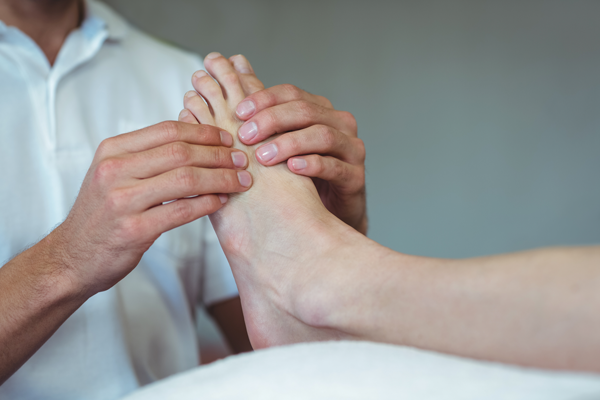 Sesamoiditis is a common bone injury of the plantar forefoot, causing pain under the big toe joint. The sesamoid bones are very small bones which are located under the big toe joint within the tendons that run to the big toe. They are similar to the knee cap, acting to increase the leverage of the tendons that control the big toe. The sesamoid bones take an incredible amount of pressure, stress, and force with every step one takes. This puts these bones at risk for developing injury and inflammation as a response to these forces.
Sesamoiditis is a common bone injury of the plantar forefoot, causing pain under the big toe joint. The sesamoid bones are very small bones which are located under the big toe joint within the tendons that run to the big toe. They are similar to the knee cap, acting to increase the leverage of the tendons that control the big toe. The sesamoid bones take an incredible amount of pressure, stress, and force with every step one takes. This puts these bones at risk for developing injury and inflammation as a response to these forces.
People participating in activities and sports that involve repetitive, excessive loading of the ball of the foot such as dancing, sprinting, football (especially due to spikes in the boots) or even walking often suffer from this condition. People with bony, higher arched feet, marked flat feet or those who tend to run on the ball of their foot also tend to be more prone to sesamoiditis.
The pain may be constant, or it may occur with or be aggravated by, movement of the big toe joint. It is generally sore when weight bearing, and may be accompanied by swelling throughout the bottom of the forefoot.
Sesamoiditis is a result of stress within the sesamoid bones. Stress fractures (fine cracks in the bone structure due to repetitive abuse) can occur if the condition is untreated, and in more severe cases can turn into a complete fracture.
Treatment for Sesamoiditis
Treatment is usually non-invasive. The Podiatrist may suggest one or more of the following:
- · Temporary Padding and Strapping: Temporary padding and strapping will offload the injured bones and will provide immediate pain relief as well as creating an environment for the body to heal itself.
- · Immediate Immobilisation of the joint
- · R.I.C.E Rest / Ice / Compression / Elevation
- · Anti-inflammatory medication
- · Orthotic therapy to accommodate the shape of the foot and to permanently reduce excessive loading on the sesamoids
Severe cases may require a below-the-knee walking cast for 2 to 4 weeks and possibly the injection of steroids. Often foot orthoses are used to correct any anatomical or functional foot issues that have contributed to the problem, in order to prevent a recurrence.
Long-term therapy must be geared to identifying the cause of the sesamoiditis so as to avoid these situations or to accommodate foot deformities or modify shoes. This may include the use of orthotic devices.
When chronic pain is unable to be managed by these conservative methods, or if avascular necrosis (cell death due to lack of blood supply) has occurred, a surgical procedure called a ‘sesamoidectomy’ may be indicated. This is removal of all or part of the painful sesamoid bone.
Most patients will have immediate improvement is symptoms with conservative care, with total resolution achieved within months. Ongoing management may be recommended in those with an underlying foot condition.

